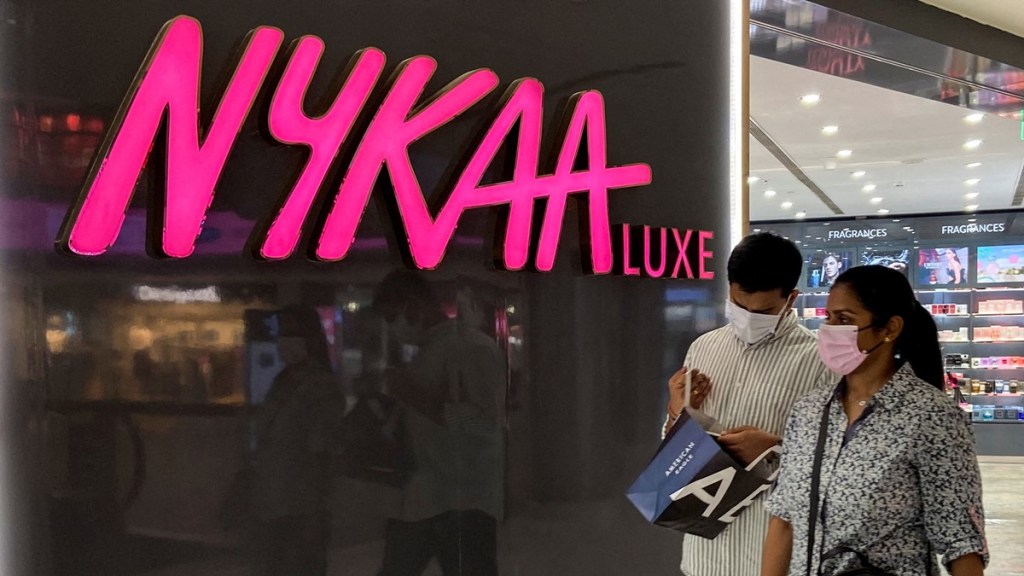Direct-to-consumer (D2C) brands, which were born on the internet and made a mark there, are now rapidly launching exclusive retail stores and selling through modern trade and neighbourhood stores. Names such as Mamaearth, Nykaa, Sugar Cosmetics, Bombay Shaving Company, Boat and Boult are only a few examples of digital-first brands that have migrated offline.
The trend, say experts, has only grown over the last few quarters. While the Covid-19 period between 2020 and 2022 saw many D2C brands grow on the back of a spurt in online sales, the post-Covid period has been about making the big leap offline, which experts describe as a “mainstreaming ” of digital-first brands.
Consider this: Beauty retailer Nykaa, which made a name for itself in the online retail space, has steadily expanded its footprint of offline stores from 72 at the end of FY21 to 150 in FY23. In the current fiscal (FY24), the company is looking to add 50 more stores, Falguni Nayar, Executive Chairperson, MD and CEO of the company said, of which 15 stores have been added so far in the first half of the year.
Mamaearth owner Honasa Consumer, which recently went public, has been even more aggressive with its offline store strategy, launching as many as 85 exclusive Mamaearth outlets across cities in the last year-and-a-half to two years and taking its overall distribution reach to over 150,000 outlets for its products.
“The consumer experience that an omnichannel strategy can give cannot be replicated purely online. This is true for a number of categories – from beauty and personal care to food, fashion, lifestyle and durables. Which explains why D2C brands are making the leap offline,” says Harish H V, founder and MD at ECube Investment Advisors, an advisory firm.
The quest for more consumers, he explains, is also driving startups and digital-only brands to make the switch offline, though he reasons that companies have to be mindful of a seamless online-offline integration to ensure the omnichannel strategy works effectively.
Most digital-first brands today have robust offline channel plans and see the brick-and-mortar space as their next growth driver. As Varun Alagh, co-founder and CEO of Honasa Consumer, explains that while online is growing as a platform, it remains a smaller channel versus offline, which continues to see nearly 90% of category buying.
“Offline continues to be the largest channel from a category perspective. For a brand like Mamaearth, which is our largest brand, the revenue contribution will keep getting skewed towards offline. For the rest of the younger brands in our portfolio that have more than 90% of their sales from online, their offline contribution will build up over time,” he says of the company’s future strategy.
Honasa Consumer, which closed FY23 with sales of Rs 1,500 crore, derives almost 35-36% of its sales from offline channels, led by Mamaearth, a Rs 1,000-crore brand. The plan, Alagh says, is to double down on the offline channel and set up more exclusive brand outlets for Mamaearth and expand overall distribution reach for its products in the coming quarters.
While challenges abound in going offline – from finding the right retail locations to an increase in fixed and variable costs including rentals, employee, distribution and other expenses- experts say that with the bulk of the consumer market in India still sitting offline, digital-first brands have no other alternative than to take the physical route for growth.
According to market research agency NielsenIQ, the overall online penetration for FMCG in India stands at 12-15%. The share is similar for consumer durables too, which explains why consumer electronics startups such as Boult and boAt have been aggressive with their offline plans in recent years, even as FMCG startups have taken the offline route at the same time.
Boult co-founder Tarun Gupta says that he expects to have a big offline presence for the startup’s audio and smartwatches business in the next one month, coming off a need to expand offline presence quickly as consumers were increasingly asking for his firm’s products within stores.
“Customers were asking for our products but then switching to other brands because we were not available offline. I think right now is a good time to enter the offline market to look at further expansion. Offline visibility gives more credibility to the online business. So it will help us both ways. The plan is to expand pan India,” Gupta says.
Rival boAt, which made the online-to-offline pivot earlier and derives 30% of its Rs 4,000-crore sales from offline channels today, says that the brick and mortar world allows for better targeting and segmentation in the case of premium products.
“Slightly more premium products will have a better propensity to sell in offline channels as you can experience the product first-hand,” says Sameer Mehta, co-founder and product chief at boAt.
D2C male grooming and personal care brand Bombay Shaving Company, meanwhile, says it is scaling up its physical distribution from the present 70,000 outlets to 3 lakh stores in the next 24 months. It also has plans to entrench its newly-launched women’s grooming brand Bombae both online and offline and says that omni-channel is the way ahead for D2C companies.

